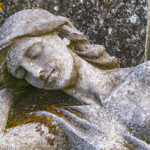Monuments and Memorials: Preserving History and Honoring Legacies
Monuments and memorials have long been an integral part of human history, serving as tangible reminders of significant events, individuals, and cultural identities. These structures, often imbued with symbolism and emotion, hold the power to educate, inspire, and unite communities. Whether they commemorate the sacrifices of soldiers, celebrate achievements, or mark historical moments, monuments and memorials leave an indelible mark on our collective memory. In this article, we will delve into the importance of these structures, explore their different forms, and discuss their impact on society.
A Symbol of Remembrance: Commemorating the Past
Monuments and memorials serve as a symbol of remembrance. They allow us to pay homage to those who came before us, acknowledging their contributions and sacrifices. These structures can be found in various forms, ranging from statues and plaques to grand architectural marvels. Each monument tells a unique story, preserving the memory of a person, an event, or an era.
I remember when I visited the Vietnam Veterans Memorial in Washington, D.C. The somber silence that enveloped the area was palpable as people paid their respects to the fallen soldiers. The names etched into the black granite wall seemed to come alive, reminding us of the human cost of war. It was a humbling experience that highlighted the power of memorials in fostering empathy and understanding.
Preserving Cultural Identity: Celebrating Diversity
Monuments and memorials also play a crucial role in preserving cultural identity and celebrating diversity. These structures give communities a sense of pride and belonging, reminding them of their unique heritage and shared values. From ancient pyramids and temples to modern-day landmarks, these architectural wonders stand as testaments to human creativity and ingenuity.
Growing up in a small town in India, the presence of a towering statue of Mahatma Gandhi in the central square was a constant reminder of our nation’s struggle for independence. It served as a beacon of hope and a symbol of unity, inspiring generations to fight for justice and equality.
Educating Future Generations: Lessons from the Past
Monuments and memorials have an educational function, serving as open-air classrooms that teach future generations about history, culture, and the human experience. These structures provide a tangible link to the past, enabling us to learn from the triumphs and tragedies that have shaped our world.
During a trip to Rome, I marveled at the ancient ruins of the Colosseum. Standing amidst the remnants of this grand amphitheater, I couldn’t help but imagine the gladiator battles and spectacles that once took place within those walls. It was a powerful reminder of the rise and fall of empires, and the importance of preserving history for future generations.
Controversy and Reconciliation: The Debate Surrounding Monuments
While monuments and memorials are intended to unite communities, they can also become points of contention. The debate surrounding the removal or preservation of certain monuments highlights the complex nature of these structures. Some argue that monuments celebrating figures associated with racism or oppression should be taken down, while others believe they should remain as reminders of our troubled past.
In recent years, the toppling of Confederate statues in the United States sparked heated discussions about the role of monuments in shaping collective memory. These events prompted a reevaluation of our relationship with historical figures and the stories we choose to commemorate.
The Power of Unity: Commemorating Together
Despite the controversies, monuments and memorials continue to hold immense power in bringing communities together. They serve as gathering places for reflection, commemoration, and celebration. Whether it’s a candlelight vigil at a memorial site or a joyous festival held near a cultural monument, these spaces foster a sense of belonging and shared purpose.
In conclusion, monuments and memorials are vital in preserving history, honoring legacies, and shaping our collective identity. They allow us to remember those who came before us, celebrate our diversity, educate future generations, and foster unity. While controversies may arise, it is through respectful dialogue and a compassionate understanding of different perspectives that we can continue to create meaningful spaces that inspire, educate, and unite us all.
Summary:













